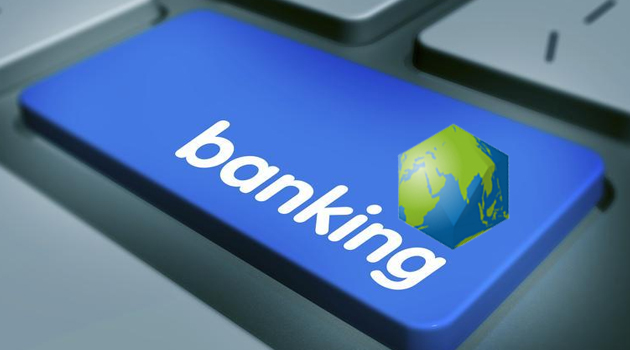Evolving “Indian Banking” Landscape: Trends, Opportunity & Challenges
India has witnessed a “Digital Revolution” that has profoundly impacted the banking industry. The government’s push towards a digital economy through initiatives like “Digital India” and “Demonetization” has accelerated the adoption of digital banking services. “Covid – Pandemic” led situations also had its fair impact on aiding the “mindset – shift” towards digital transactions. Consumers are now increasingly comfortable with conducting financial transactions through online platforms and mobile applications. This has led to a surge in digital payment volumes, mobile banking registrations, and internet banking users.
It is evident from the below given Charts 1 to 6, regarding trend of UPI , Mobile Banking, & RTGS Transactions over the past few years (Source RBI & NPCI)
It is evident from the above – presented charts, that UPI – Unified Payment Interface coupled with mobile banking, is surgingahead whereas traditional payment and settlement method of RTGS is showing muted growth in comparison with UPI / Mobile Banking transactions.
Digital Identity and Security
The digitization of banking services has also highlighted the importance of digital identity and security measures. Ensuring the authenticity of customers during online transactions is crucial to prevent identity theft and financial fraud.
The Indian government’s Aadhaar system has played a significant role in establishing a unique digital identity for citizens. However, with increasing digital transactions, there is a need for robust authentication methods, such as two-factor authentication and biometrics, to protect customer accounts from unauthorized access.
Banks are investing in advanced security technologies, such as biometric authentication and behavioural analytics, to detect and prevent fraud attempts. Additionally, customer awareness and education about cybersecurity best practices have become vital to safeguarding personal and financial information.
Furthermore, the fintech sector in India has been booming, with numerous start-ups disrupting traditional banking models. Fintech companies are leveraging technologies such as artificial intelligence (AI), blockchain, and data analytics to offer innovative financial products and services. They cater to the unbanked and underbanked population, bridging the financial inclusion gap in the country.
We are also witnessing revolutionizing “Interoperability” in India’s Digital Landscape. In an increasingly interconnected world, interoperability has become the cornerstone of efficient and seamless communication. Nowhere is this more evident than in India, a country that has embraced digital transformation at an unprecedented pace. The Indian digital ecosystem is expanding rapidly, with various government initiatives, private sector innovations, and the proliferation of smartphones and the internet.India’s digital landscape is marked by fragmentation, with different sectors and entities often using disparate systems and technologies. Interoperability aims to unify these diverse elements into a cohesive network.Interoperability also, prioritizes inclusivity, ensuring that digital services are accessible to all, regardless of geographical location or socioeconomic status. This is vital for achieving the government’s vision of a Digital India.
Very recently , Reserve Bank of India unveiled “ICCW – Interoperable Card-less Cash Withdrawal”. UPI-ATM (Interoperable Card-less Cash Withdrawal) service. This service shall facilitate participating banks’ customers who are live on UPI, to withdraw cash from any participating banks’ ATMs (enabled for UPI-ATM) without using their card.
Once the customer selects the option ‘UPI cash withdrawal’ at the ATM, customer shall be prompted to enter the withdrawal amount. After entering the amount, a single use dynamic QR code (signed) shall be displayed on the ATM screen. Customer needs to scan the QR code using any UPI Application and authorize the transaction with UPI PIN on the mobile (UPI APP) to get cash from the ATM.
This is just one of the recent measures that indicate robust – growth-oriented world class banking landscape in India. In this comprehensive article, we will delve into different aspects, exploring its significance, challenges, and the potential it holds for transforming India’s banking canvas. Some of the features and initiatives are already in place making its presence felt across the world, some initiatives reflect the growth mindset – the way forward. Also, we shall be discussing challenges and possible ways and means to mitigate.
Open Banking and API Integration:
The Reserve Bank of India (RBI) has been at the forefront of promoting open banking initiatives in the country. Open banking allows third-party financial service providers to access customer banking data through secure application programming interfaces (APIs). This facilitates the development of innovative financial products and services by fintech companies, leading to enhanced customer experiences.
The concept of open banking revolves around the secure sharing of customer data with authorized third-party providers (TPPs) through standardized APIs. Open banking fosters competition and innovation by enabling fintech startups to access banking data and develop value-added services for customers.
Adopting open banking requires banks to develop robust API frameworks that adhere to security standards while ensuring seamless data transfer. The use of APIs also allows banks to collaborate with other financial institutions and share financial data in real-time, facilitating faster loan approvals and credit assessments commonly termed as “STP – Straight Through Processing”.
However, open banking also brings forth challenges related to data privacy, customer consent, and data governance. Banks must navigate these complexities while reaping the benefits of open banking to offer a broader array of services and maintain a competitive edge.
E-commerce and Payment Innovations:
The rise of e-commerce has reshaped consumer behaviour and payment preferences in India. The ease of online shopping and the availability of a wide range of products have led to a surge in digital payments.
Mobile wallets, UPI (Unified Payments Interface), and QR code-based payments have become popular choices for consumers due to their convenience and security. Moreover, contactless payment methods using Near Field Communication (NFC) technology are gaining momentum, offering a seamless checkout experience in retail stores.
Banks are collaborating with e-commerce platforms to offer exclusive discounts, cashback offers, and personalized financing options to customers. This partnership between banking and e-commerce sectors enhances customer loyalty and drives digital adoption.
Customer-Centric Banking:
One of the critical shifts in the Indian banking sector is the increasing focus on “Customer- Centricity”. As competition intensifies, banks are prioritizing customer satisfaction and experience to retain existing customers and attract new ones. Personalization, convenience, and seamless interactions across various touchpoints have become central to enhancing customer loyalty.
Banks are leveraging data analytics and AI – Artificial Intelligence to gain insights into customer behaviour, preferences, and needs. This data-driven approach enables them to offer personalized product recommendations and targeted marketing campaigns. Moreover, digital banking platforms provide 24/7 accessibility, making it easier for customers to manage their finances, transfer funds, pay bills, and avail themselves of various services from the comfort of their homes.Additionally, customer feedback mechanisms, such as surveys and social media monitoring, have become crucial for banks to understand their customers’ sentiments and pain points. This real-time feedback allows banks to identify areas for improvement and tailor their services accordingly.
Role of Artificial Intelligence and Chatbots
Artificial Intelligence (AI) is revolutionizing the banking sector, offering a wide range of applications to enhance operational efficiency and customer experience. Chatbots, in particular, have become a prominent feature of digital banking platforms. These AI-powered virtual assistants provide instant responses to customer queries, offer personalized assistance, and guide users through various banking processes.
Chatbots not only handle routine inquiries but also facilitate seamless interactions across multiple channels, including websites, mobile apps, and social media platforms. The 24/7 availability of chatbots ensures that customers can access support whenever they need it, improving customer satisfaction and reducing wait times for service.
Moreover, AI is being utilized for credit risk assessment, fraud detection, and regulatory compliance. Advanced machine learning algorithms analyse vast amounts of data to identify potential risks and anomalies, allowing banks to make data-driven decisions and prevent fraudulent activities.
Wealth Management and Robo-Advisors
Wealth management services in India have also witnessed a transformation, driven by technology-driven solutions and changing investor preferences. Robo-advisors, powered by AI and data analytics, have gained popularity as a cost-effective and efficient way to manage investments. These automated platforms offer personalized investment advice based on an individual’s financial goals, risk appetite, and investment horizon.
While traditional wealth management services still cater to high-net-worth individuals, “Robo – Advisory” platforms provide accessible investment opportunities to a broader audience. They also offer diversified portfolios and real-time monitoring, ensuring a dynamic investment strategy aligned with market trends.
Credit and Lending Landscape
The credit and lending landscape in India have witnessed notable changes, driven by digitalization and data-driven lending practices. Traditional banks, as well as fintech lenders, have adopted advanced algorithms and machine learning models to assess creditworthiness more efficiently. This has led to the rise of alternative credit scoring, where factors beyond traditional credit histories, such as utility bill payments, social media behaviour, and transaction data, are considered for evaluating creditworthiness.
Furthermore, peer-to-peer (P2P) lending platforms have gained popularity as an alternative source of credit for individuals and small businesses. P2P lending connects borrowers directly with individual lenders, bypassing traditional banking intermediaries. These platforms facilitate financial inclusion by providing credit access to borrowers who may not meet the stringent criteria of traditional banks.
However, the increased reliance on digital lending has also raised concerns about responsible lending practices and consumer protection. The RBI and other regulatory authorities are closely monitoring the sector to ensure fair practices and prevent instances of predatory lending.
Green Banking and Sustainable Finance
With growing concerns about climate change, there is an increasing focus on sustainable finance and green banking practices in India. Banks are incorporating environmental, social, and governance (ESG) criteria into their lending decisions and investment portfolios. The issuance of green bonds and financing renewable energy projects are some of the initiatives undertaken to promote sustainable development.
Blockchain Applications in Banking
Blockchain technology has gained significant attention in the banking sector due to its potential to enhance security, transparency, and efficiency in financial transactions. Blockchain is a decentralized and distributed ledger that records transactions across a network of computers, ensuring immutability and reducing the risk of fraud and data manipulation.
In the context of banking, blockchain is being explored for various applications, including cross-border payments, trade finance, and identity management. Blockchain-based platforms offer real-time settlement and remove the need for intermediaries, reducing transaction costs and settlement times.Smart contracts, a self-executing code stored on the blockchain, further streamline processes by automating contract execution when predefined conditions are met. This technology facilitates automatic payments, improves contract transparency, and reduces the reliance on intermediaries.Additionally, blockchain-based digital identities are being explored to provide users with a secure and verifiable identity, reducing the risk of identity theft and improving Know Your Customer (KYC) processes.
Quantum Computing and Cryptography
As banks face the challenge of ensuring robust cybersecurity, the advent of quantum computing presents both opportunities and threats. Quantum computing’s immense computational power has the potential to break current cryptographic algorithms that underpin digital security.
To address this concern, banks are exploring quantum-safe cryptographic solutions that can withstand quantum attacks. These post-quantum cryptographic algorithms aim to protect sensitive data even in the face of quantum computing capabilities.
Additionally, quantum computing holds promise for various banking applications, such as optimizing portfolio management, pricing complex financial derivatives, and improving fraud detection algorithms. Quantum computing could lead to a range of applications such as analysing large areas of heterogenous data to make financial predictions and understand economic phenomena, analysis of financial markets, and the management of asset allocation and risk management. As quantum computing technology advances, banks will need to stay at the forefront of research and development to leverage its potential benefits.
Biometric Authentication and Security
Biometric authentication is becoming increasingly prevalent in banking, providing a secure and convenient method for customer verification. Fingerprint recognition, facial recognition, and iris scanning are being used to replace traditional passwords and PINs, enhancing the security of digital transactions.
Biometric authentication not only minimizes the risk of unauthorized access but also prevents identity theft and phishing attacks. As biometric technologies become more sophisticated and widely adopted, they will play a pivotal role in ensuring a frictionless and secure banking experience.
Let us discuss some challenges amidst all growth opportunities and ways and means to mitigate.
Cybersecurity and Fraud Mitigation
With the increasing reliance on digital channels, the risk of cyber threats and financial fraud has also risen. Banking institutions in India are continuously investing in robust cybersecurity infrastructure to safeguard customer data and transactions. Additionally, AI – Artificial Learning and ML- Machine Learning are being employed to detect fraudulent activities in real-time, preventing potential losses.
Data Privacy and Compliance Challenges
As the banking sector becomes more data-driven, ensuring data privacy and compliance with regulations becomes paramount. Banks handle vast amounts of sensitive customer information, making them potential targets for cyberattacks and data breaches.
To protect customer data, banks need to implement robust data security measures, encryption protocols, and multi-factor authentication. Additionally, compliance with data protection laws, requires continuous monitoring and adherence to strict data handling practices. Regulatory compliance is a complex aspect of banking operations, with various authorities issuing guidelines on anti-money laundering (AML), KYC, and customer due diligence (CDD). Meeting these requirements demands sophisticated risk management systems and monitoring tools to detect suspicious activities and report them promptly to regulatory authorities.
The Indian banking sector operates in a complex regulatory environment, governed by various agencies, including the Reserve Bank of India (RBI) and the Securities and Exchange Board of India (SEBI). Staying compliant with evolving regulations poses a significant challenge for banks, especially with the introduction of new technologies and business models.
Regulatory compliance is essential not only for risk management but also to maintain customer trust and confidence in the banking system. Banks must continuously invest in robust compliance frameworks, risk management systems, and internal controls to adhere to regulatory guidelines and mitigate potential risks.
Rural Banking and Financial Inclusionwith an objective of “Financial Literacy and Education”.
Despite significant strides in financial inclusion, a considerable portion of India’s population whoresides in rural areas with limited access to formal banking services. Addressing this challenge remains a key priority for the banking industry. Promoting financial literacy and education has become a critical aspect of the banking sector’s agenda in India. Despite the significant strides in financial inclusion, a considerable section of the population remains financially illiterate, leading to suboptimal use of banking services and products.
In recent years, banks have expanded their presence in rural regions by setting up brick-and-mortar branches, banking correspondents, and mobile banking vans. These efforts have helped in bringing basic banking facilities closer to the unbanked population. Banks and financial institutions are taking proactive measures to educate customers about various financial products, investment options, and risk management strategies. Financial literacy programs are conducted through digital channels, workshops, and collaboration with educational institutions.
Furthermore, the digitization of banking services has played a crucial role in financial inclusion. Through mobile banking and mobile wallets, individuals in remote areas can now conduct transactions, access credit, and avail insurance services with ease. Additionally, the government’s Direct Benefit Transfer (DBT) scheme, which deposits subsidies and welfare payments directly into beneficiaries’ bank accounts, has been a significant catalyst for financial inclusion. By empowering individuals with financial knowledge, banks aim to promote responsible financial behaviour, encourage savings, and enhance overall economic stability.
Human-Technology Collaboration
As banks embrace digitalization, there is a growing concern about the potential job displacement caused by automation and AI. However, the future of banking lies in striking the right balance between technology and human interaction.
While digital banking platforms handle routine transactions and queries, human touch remains crucial for complex financial advisory, dispute resolution, and building trust. Banks are now investing in upskilling their workforce to be proficient in digital technologies and customer engagement. This ensures that bank employees can effectively guide customers through the digital banking journey and offer personalized assistance when needed.
Nurturing Innovation: Sandboxes and Regulatory Sandboxing
To encourage innovation in the financial sector, regulatory authorities in India have introduced regulatory sandboxes. These sandboxes allow fintech start-ups and financial institutions to test their innovative products and services in a controlled environment, without immediately complying with all regulatory requirements. It provides an opportunity for participants to understand potential regulatory challenges and refine their offerings before a full-scale launch.
The RBI’s regulatory sandbox initiative has facilitated the development of cutting-edge solutions such as blockchain-based remittances, digital identity solutions, and microinsurance products. This approach fosters a culture of innovation and collaboration between regulators and industry players.
Future – Outlook and Opportunities
The future of banking in India is promising, with numerous opportunities arising from technological advancements and evolving customer expectations. Embracing emerging technologies like AI, blockchain, and biometrics will enable banks to offer more secure and innovative services.
Furthermore, collaboration between traditional banks and fintech startups will foster innovation and enhance the quality of financial services. Joint ventures, investments, and partnerships can help banks access cutting-edge technologies and expand their product offerings to cater to diverse customer segments.
As India’s economy continues to grow, the banking sector will play a critical role in supporting businesses, individuals, and government initiatives. The ongoing emphasis on financial inclusion and sustainable banking practices will contribute to a more equitable and greener economy.




